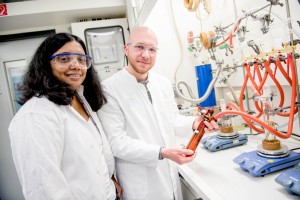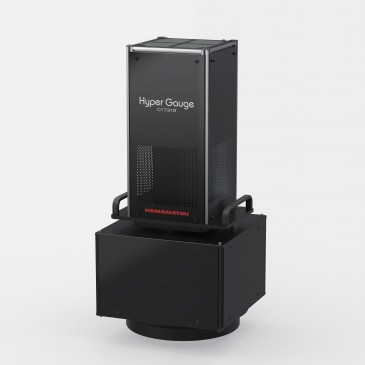
Researchers at Ruhr-Universität Bochum (RUB) and the University of Wuppertal, both in Germany, have developed a new atomic layer deposition (ALD) process for transparent ultra-thin silver films that overcomes the challenges of traditional chemical methods for producing ultra-thin and pure silver films and promises to boost the efficiency of solar cells and light-emitting diodes.
The new fabrication process
The new method for synthesizing transparent ultra-thin silver films is based on a new atomic layer deposition (ALD) process. The team synthesized a novel silver precursor they say possesses the ideal requirements for ALD applications. Generally, metallic thin layers need a higher percolation thickness to form continuous layers. However, the resulting thin films are then no longer transparent. "With the development of a new carbene-based silver precursor, it was possible to get a continuous coverage of the silver atoms on the substrate at low deposition temperatures via ALD, leading to transparent and conductive thin films," says Professor Dr Anjana Devi, emphasizing that developing the new halogen- and phosphine-free chemical silver precursor was a key step for the fabrication of transparent, conductive and clean silver films by atomic layer deposition.
Devi, who is the Chair of Inorganic Chemistry II at RUB, says this is the first time a process has been reported for transparent and conductive thin films that are free of halogen or phosphorous, as the new carbene based precursor was free of these elements. "The growth rates of the silver thin film during deposition are exceptionally high compared with the standard ALD process employing a different chemical substance, or precursor," the researcher says. "Moreover, the transparent, conductive films were obtained at much lower thickness, which is one of the highlights of this research work. All this was enabled due to the new precursor development."
Transparent and conductive thin films are much sought after as transparent electrodes in solar cells or LEDs. But traditional chemical methods for producing ultra-thin and pure silver films proved difficult. The process developed by the team in Germany, by contrast, meets the required specifications and drastically enhances the typically low growth rates of silver ALD processes. "This has not been achieved so far by ALD, which is a very promising process for industrial scale up," Devi says. Furthermore, the novel process enables the scientists to avoid contamination of the thin silver film with fluorine, oxygen and phosphorous.
The promise of more efficient solar cells and LED
The inorganic materials chemistry expert confirms that her team´s research advance could help to make the next generation of solar cells and light-emitting diodes more efficient: "Ultra-thin silver films are transparent and conductive at the same time while they also tend to be way more flexible than the brittle analogous material indium-tin-oxide (ITO) that is currently used in solar cells," Devi says. "The ultra-thin silver films may pave the way to flexible solar cells in the future."
Developing this new synthesis method did not come without obstacles for the researchers. "The biggest challenge was to stabilize the silver atom in a way that it is volatile, stable and reactive," Devi reveals, explaining that stability and volatility are critical so the precursor can be easily transported to the substrate during thin-film deposition. Chemical silver compounds tend to decompose quickly before even vaporizing. This new compound, however, could be transported to the film deposition zone intact. "Moreover, we wanted to include chemistry that does not contain halogens or phosphorous, which, based on literature reports, is generally needed to stabilize the silver precursors," Devi continues. "These unwanted elements can be detrimental for the film properties."
Speaking about the potential impact of her team´s research breakthrough on the design of future, more efficient light-based technologies, Devi says their findings could lead to the development of low-cost, high-throughput and high-quality processes for the deposition of ultra-thin silver films that can be used in next-generation flexible and efficient solar cells.
A surprisingly successful outcome early on
"We had a new research concept in mind, and to our surprise, we could develop a new precursor in the first few synthesis trials we attempted," Devi shares. What is more, the precursor "perfectly" yielded the target material — namely, transparent and conducting thin films via atomic layer deposition. "This can be considered as a breakthrough in the field of ALD of silver," she says. "Precisely tuning the chemistry of the compounds used for ALD of silver metal can have a huge bearing on the outcome of process design for growing the target materials and devices."
During the next phase of this research endeavor, Devi and her colleagues are planning to actually implement their silver films in prototype solar cells and LEDs.
Their paper, "An N-Heterocyclic Carbene Based Silver Precursor for Plasma-Enhanced Spatial Atomic Layer Deposition of Silver Thin Films at Atmospheric Pressure," was published in the journal Angewandte Chemie.
Written by Sandra Henderson, research editor Novus Light Technologies Today























 Back to Features
Back to Features

























